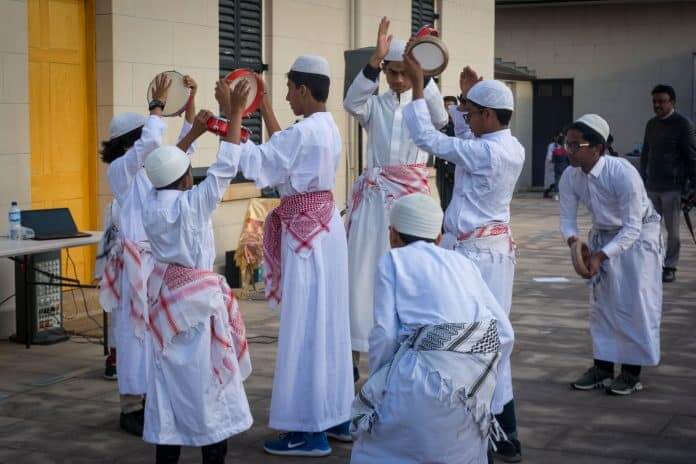Old Government House was abuzz with the sounds of the traditional Oppana (a ritual dance performance for brides) as we entered the courtyard. Little girls aged 4-6 years, clad in kachi (a kind of wraparound skirt), kuppayam (blouse), and thattam (scarf) moved delightfully to the traditional tunes. As their scarves glazed in the winter sun and shone bright like their sparkly eyes, they became the perfect introduction to the exhibition Kerala’s Muslim Culture staged at the historic venue.

It was part of the exhibition Tales from the East: NSW and India. (on till 26 August 2018). Organised as a joint venture between Australian Malayalee Islamic Association (AMIA) NSW chapter, National Trust Australia and Old Government House, this exhibition offered an insight into how Islam evolved as one of the major religions of the state of Kerala.

And there was something for everyone – from mehndi (or mylanchi in Malayalam) to checking out the tastefully curated artefacts from Keralite life, to Duff Muttu (a dance in which boys dance to the rhythmic beats of duff, a percussion instrument), to authentic Keralan snacks like Unnakka (stuffed banana) and Unniyappam (snack made from rice, jaggery, banana, spices), and to cooking demos. Consul General of India (Sydney) B Vanlalvawna inaugurated the event.

A very unique addition to the event were the talks run in two sessions, almost throughout the day-long event. Commencing with one of the curators, Ian Stephenson from National Trust Australia talking about Gen. Macquarie and Kerala, it ranged from Kerala’s Islamic bequest to the tales of Eastern Medicine. It was quite interesting to go through posters hung on topics like ‘How does Islam elevate the status of women?’ and ‘What do Muslims think of Jesus’, that conveyed positive messages on balanced thoughts and religious integration.
Dr Ali Parappil, a representative of AMIA mentioned during a conversation that “this is an ‘Open day’ to portray the Malayalee Muslims that live in Australia”.
How Islam came to Kerala
Islam first came to India not via the north, as is commonly believed, but via the south. Unlike in the north, it came first as a peaceful religion, in the days of the Prophet Mohammad. Arab traders often visited the Malabar Coast as well as other destinations of the Far East and South Asia. In India, they were welcomed by the rulers. Around 625 AD, the Chera king Cheramun Perumal of Kerala came into close contact with Arab merchants who helped him out with a perplexing personal problem. He travelled to Mecca with them to meet Prophet Mohammad and converted to Islam, taking the name Taj-Ud-Din. He was the first Indian to accept Islam. However he fell ill on his return journey and died, but not before asking his chieftains to allow the new faith to be practised freely. He also bequeathed land for the first ever mosque in India, in Kodungallur town in central Kerala, 30 km north of Kochi. The town is known today as Cranganore, and the mosque, known by the name Cheraman Jum’ah Masjid, continues to stand to this day since it was first built in 628 AD.
Muslim tales from the east
An exhibition offers insight into how Islam came to be a vital part of the state of Kerala

Reading Time: 3 minutes



